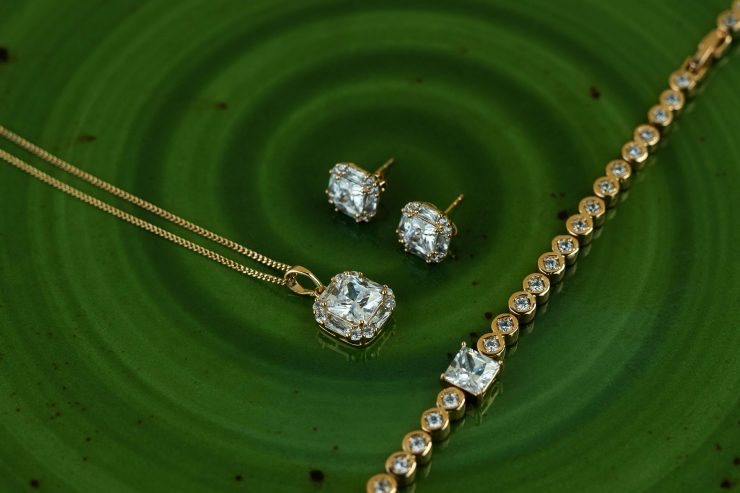The emergence of lab-grown diamonds represents one of the most transformative developments in the jewelry industry over the past two decades. These diamonds, created using advanced technological methods such as Chemical Vapor Deposition (CVD) and High Pressure High Temperature (HPHT), are chemically, physically, and optically identical to their mined counterparts. Unlike simulants like cubic zirconia or moissanite, lab-grown diamonds are real diamonds in every sense, having the same carbon crystal structure. As consumer awareness grows, more buyers are exploring these sustainable alternatives. However, despite their rising popularity, lab-grown diamonds still face skepticism from certain consumer segments. This skepticism stems from misconceptions around their authenticity, value, durability, and ethical implications. Understanding why lab-grown diamonds have become more prevalent—and what sets them apart—is key to developing strategies that build trust. Retailers, educators, and industry stakeholders must actively engage in informative outreach to clarify how these stones are made, how they perform in real-world use, and how they compare with mined diamonds, both economically and ethically.

The Importance of Transparency in Building Trust
One of the foundational elements in gaining customer trust is transparency. Lab-grown diamonds are not inferior or “fake” alternatives—they are genuine diamonds created in controlled environments. Yet many consumers remain unaware of the distinctions between synthetic diamonds and simulants, often confusing one for the other. Transparency in marketing, labeling, and sales practices is crucial to clearing this confusion. Retailers must clearly state the origin of their diamonds, the technologies used in their production, and how these factors influence pricing and sustainability. Additionally, consumers should be given access to the same type of gemological certifications that mined diamonds receive. Laboratories such as IGI and GIA now grade lab-grown diamonds using the same rigorous standards. Providing buyers with these certifications, as well as complete disclosure about how and where the diamond was produced, empowers them to make confident, informed purchasing decisions. In this digital age, transparency also extends to online presence. Retailers with open, informative websites that offer detailed educational content about lab-grown diamonds are far more likely to earn trust than those who rely solely on high-level marketing language or evasive claims.
Highlighting the Ethical and Environmental Advantages
An increasingly influential factor in jewelry purchasing decisions is the ethical and environmental impact of the product. Traditional diamond mining has long been associated with environmental degradation, displacement of communities, and funding of conflict—often termed “blood diamonds.” In contrast, lab-grown diamonds offer a conflict-free, environmentally responsible alternative. Creating diamonds in a lab requires significantly less land excavation and generally results in a much smaller carbon footprint, particularly when renewable energy sources are used in the production process. By highlighting these ethical benefits, retailers can appeal to the growing demographic of socially and environmentally conscious consumers. Transparency about these issues, supported by verifiable data and third-party audits where possible, adds credibility to claims and builds a foundation of trust. Brands that align themselves with eco-friendly values and demonstrate genuine commitment to sustainability—not just in diamond production, but in packaging, shipping, and corporate governance—stand to win long-term loyalty from conscientious buyers. Educating customers on how lab-grown diamonds minimize harm to ecosystems and human communities creates not only understanding but also emotional investment in the product.
Addressing Misconceptions About Quality and Value
A major barrier to widespread adoption of lab-grown diamonds is the perception that they are inferior in quality or value compared to mined diamonds. This belief is outdated and largely unsupported by gemological science. Lab-grown diamonds can be produced to be internally flawless, colorless, and of exceptional carat size, with precision control that is difficult to achieve in natural geological conditions. Moreover, they can be found in the same range of color and clarity grades as natural diamonds, and are available in traditional cuts like round, princess, and emerald. In fact, the only differences between lab-grown and natural diamonds lie in their origin and trace elements—details that can only be identified using specialized equipment. To build trust, jewelers must educate potential buyers on how lab-grown diamonds are evaluated using the 4Cs: Cut, Color, Clarity, and Carat Weight, just like natural ones. Value, however, is a more nuanced topic. While lab-grown diamonds generally cost 30–50% less than mined diamonds of comparable quality, this price gap is not due to quality, but rather to supply chain differences and production scalability. By explaining the economics behind lab-grown pricing and the long-term stability of the market, sellers can help consumers appreciate the true value of their purchase, which includes both quality and ethical peace of mind.

The Role of Certification and Gemological Standards
Certification plays a critical role in building consumer confidence in lab-grown diamonds. Just like their mined counterparts, lab-grown diamonds are graded and certified by reputable gemological laboratories such as the Gemological Institute of America (GIA), the International Gemological Institute (IGI), and others. These labs use standardized criteria—commonly referred to as the 4Cs (Cut, Color, Clarity, and Carat)—to assess the quality of each stone. Importantly, the same rigorous grading process is applied to lab-grown diamonds, which helps consumers objectively compare them with natural diamonds. Certification reports also include laser inscriptions and unique grading reports, which help verify authenticity and traceability. Some grading labs are now incorporating additional information specific to lab-grown diamonds, such as the method of creation (CVD or HPHT) and the identity of the manufacturer. By providing third-party verified information, certifications eliminate the guesswork from purchasing decisions. Retailers and manufacturers who consistently offer certified stones not only enhance customer trust but also promote transparency across the industry. For new buyers, especially those unfamiliar with the nuances of gemology, access to professional certification offers a layer of assurance that no amount of advertising can replicate.
Educating Retail Staff and Enhancing Customer Experience
One often-overlooked element in establishing trust in lab-grown diamonds is the role of knowledgeable, well-trained retail staff. Whether in brick-and-mortar stores or online customer service chats, the person-to-person interaction significantly influences buyer confidence. Sales associates must be equipped with a comprehensive understanding of the science, production methods, and ethical benefits of lab-grown diamonds. They should be prepared to answer detailed questions about how these stones are made, how they compare to mined diamonds in terms of longevity and quality, and what certifications mean. Training programs should go beyond basic sales scripts and encourage staff to act as educators and advisors rather than simply as sellers. When staff can confidently explain the provenance and properties of lab-grown diamonds, they reinforce a sense of credibility and reliability. Furthermore, investing in customer service excellence—such as flexible return policies, warranties, financing options, and interactive digital tools—enhances the overall buying experience. Transparency and personalized support throughout the sales process can turn a hesitant first-time buyer into a loyal advocate. In a market where many consumers are making emotionally significant purchases, such as engagement rings, the assurance provided by knowledgeable professionals is invaluable.
Using Digital Platforms to Build Trust Through Content
With the majority of modern shoppers conducting research online before making a purchase, digital content is a powerful tool for educating potential buyers and earning their trust. Jewelry brands that invest in high-quality, fact-based content about lab-grown diamonds can position themselves as thought leaders and trustworthy sources of information. This content may include blog articles, downloadable guides, comparison charts, video explainers, virtual showroom tours, and social media Q&A sessions. Key topics to cover include the diamond growth process, comparisons with mined diamonds, pricing explanations, care instructions, and certification breakdowns. Additionally, customer testimonials, behind-the-scenes footage of the production process, and interviews with gemologists can personalize and humanize the brand. SEO-optimized content also ensures that educational materials reach the right audience organically through search engines. Transparency and authenticity should guide every piece of content—consumers are increasingly adept at identifying marketing fluff, and they gravitate toward brands that provide honest, detailed information. By using digital platforms to proactively answer questions and dispel myths, jewelry retailers can establish a meaningful connection with buyers and foster long-term trust in lab-grown diamond products.
The Future of Consumer Trust in Lab-Grown Diamonds
As consumer preferences evolve and awareness increases, lab-grown diamonds are poised to become a major player in the global gemstone market. However, the future success of this industry depends not just on technological advancement or competitive pricing, but on the ability to build and sustain trust with consumers. This trust must be nurtured through comprehensive education, honest marketing, and consistent delivery of value. Industry leaders should continue to collaborate with certification bodies, invest in staff training, and adopt best practices for transparency. Innovation should extend beyond production techniques to include customer engagement strategies, digital outreach, and sustainable business practices. Public discourse around environmental responsibility, ethical sourcing, and supply chain transparency will likely continue to grow—offering lab-grown diamond brands a unique opportunity to lead by example. As the stigma around man-made gems diminishes, thanks to science-backed education and improved retail practices, lab-grown diamonds may well redefine luxury for a new generation of buyers. The brands that recognize this shift and act with integrity will not only earn trust but will help reshape the jewelry landscape for decades to come.